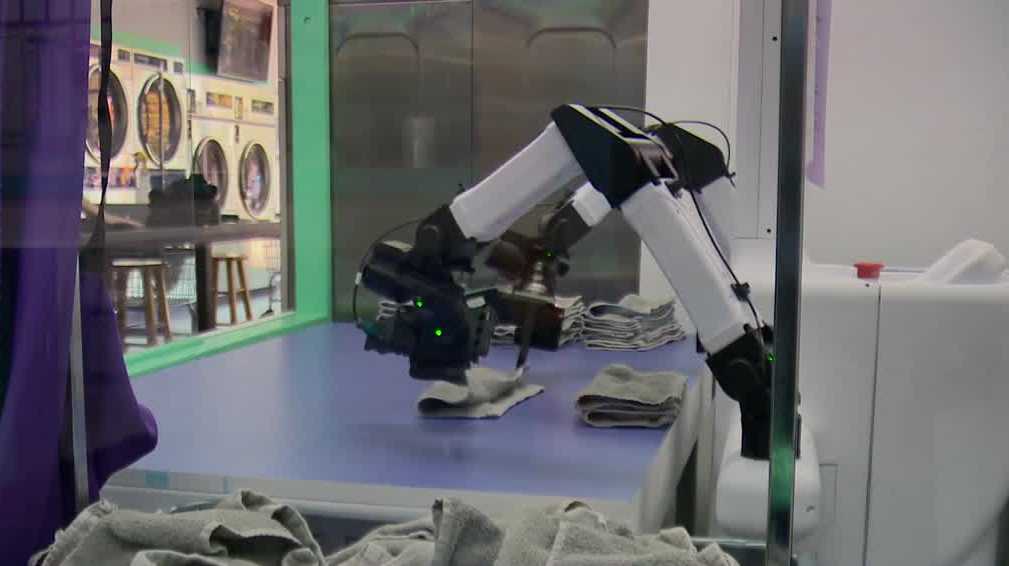Dyna Robotics Raises $120M to Scale AI-Powered Robotic Arms and Transform Real-World Automation

AI-Powered Robotic Arms: Dyna Robotics Raises $120M and Redefines Real-World Automation
Major Funding Fuels Expansion of Intelligent Robotics
Dyna Robotics has captured industry and investor attention by securing a substantial $120 million in financing, significantly elevating its valuation to $600 million. The round attracted participation from globally recognized technology investors, including the venture capital divisions of Nvidia, Amazon, Salesforce, Samsung, and LG. This commitment underscores a rising confidence in intelligent automation solutions and the transformative role of robotics in service and retail environments.
Founded in 2024, the company has rapidly progressed from concept to deployment. Its approach is centered around modular, AI-empowered robotic arms, which can autonomously learn new skills in just hours. Dyna’s latest generation, the DYNA-1, made headlines with a test case where a robotic arm folded over 700 napkins in a single day, achieving more than 99.4% accuracy—all without human oversight. Such high throughput and reliability highlight a new era in robotics, driven by self-improving machine intelligence.
What sets Dyna apart is its pragmatic use of AI in robotics: instead of prescribing every conceivable task with manual coding, its foundation model absorbs real-world data, adapting performance in the field. This approach optimizes processes such as laundry folding, towel organization, and retail apparel arrangement in customer-facing and backroom settings, yielding both efficiency and scalability.
Transforming Everyday Businesses with Adaptive Automation
Dyna’s intelligent arms are no longer confined to lab environments. The robots work up to 16 hours a day in venues including laundromats—folding garments with precision—fitness centers, where they handle towel logistics, and retail outlets that rely on consistent, accurate sorting and organization of stock. Operating autonomously, these robotic systems meet commercial-grade demands for reliability and productivity.
Unlike conventional automation, which often addresses only narrowly defined workflows, these general-purpose robotic arms are engineered for adaptability. Dyna’s foundation model enables the same hardware platform to quickly acquire new operational skills, reducing downtime and retraining costs. This adaptability is critical for businesses needing to pivot workflows or expand their range of automated services without heavy upfront investments.
The ability of Dyna’s robotics to transition seamlessly between distinct environments, such as hospitality, fitness, and apparel retail, demonstrates the maturity and versatility of its AI models. This capability reduces integration friction and accelerates return on investment, putting state-of-the-art, practical robotics within reach for organizations across multiple industries.
Strategic Vision: “Physical AGI” and Human-Machine Collaboration
The recent capital infusion will be deployed to scale Dyna’s workforce, bolster infrastructure, and propel further research on broader applications. The company’s long-term vision is to develop what is described as “physical AGI”—artificial general intelligence embodied in functional machines capable of mastering an expanding set of complex real-world tasks. This ambition positions Dyna at the forefront of not just business automation but a future in which machines collaborate alongside people to solve critical challenges in labor, logistics, and commerce.
Co-founder and CEO Lyndon Gao articulated this vision by noting that unlocking the potential of intelligent physical agents represents a pivotal advancement on the path towards widespread abundance and productivity. Dyna’s robotics portfolio, and the company’s core focus on real-world deployment, signal a new phase in the evolution of machine intelligence—where adaptive algorithms and embodied systems directly enhance operational efficiency, reduce labor bottlenecks, and enable solutions to previously unsolved automation challenges.
As demand for flexible robotics intensifies across industries, Dyna’s model sets a benchmark for rapid learning, task diversity, and commercial scalability. The company’s progress and strategic partnerships with industry titans further validate the promise of embodied AI as a cornerstone technology shaping the next decade of automation, self-improving systems, and intelligent commercial robotics.
The Path Ahead: Scaling, Research, and Industry Impact
The newly secured investment will advance not only manufacturing and deployment, but also Dyna’s research agenda—driving innovations in robotics software, data infrastructure, and distributed learning. By scaling its engineering and operations, Dyna is poised to bring more versatile, cost-efficient automation to businesses globally, lowering barriers to entry and fostering broad adoption of human-collaborative robots.
In summary, the backing by industry leaders, commercially validated deployments, and ambitious roadmap for general-purpose machine intelligence position Dyna as a prominent player in the ongoing evolution of robotics. This rapid progression from pioneering napkin-folding trials to multi-industry automation has showcased the potential of adaptive robotics to revolutionize physical work—one task, one setting, and one breakthrough at a time.
